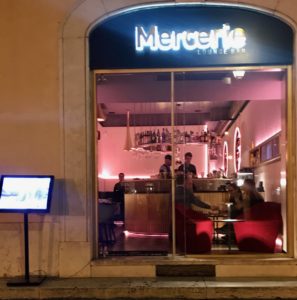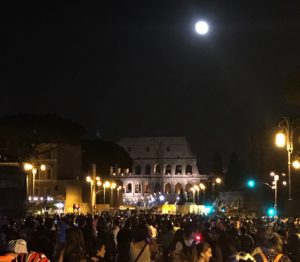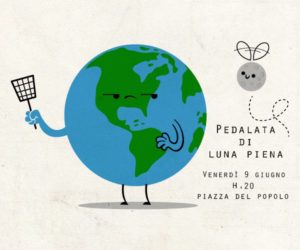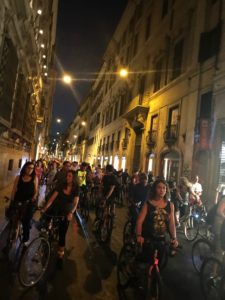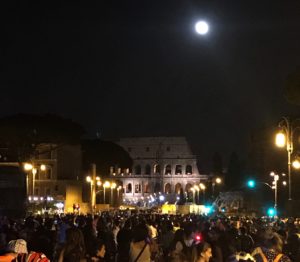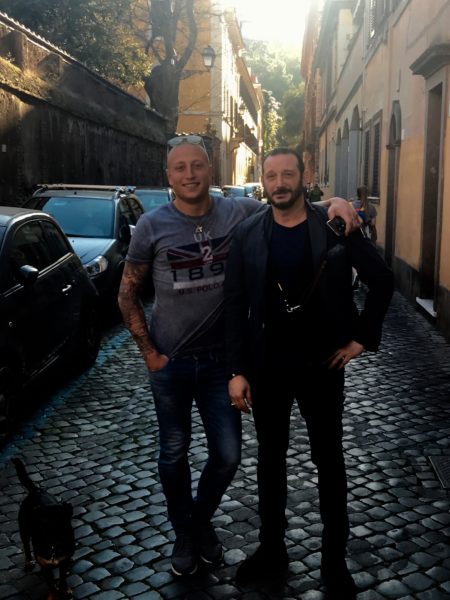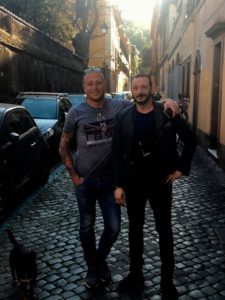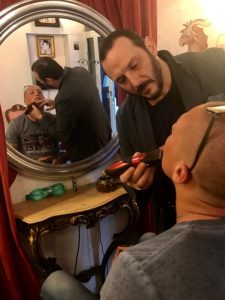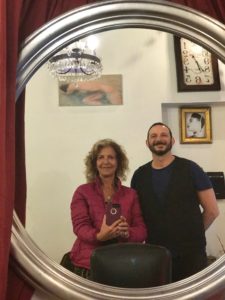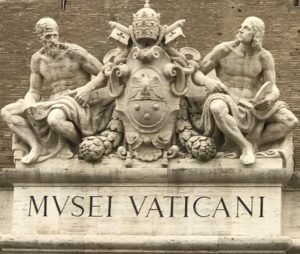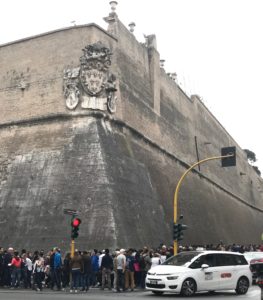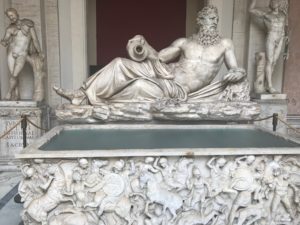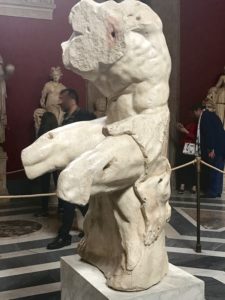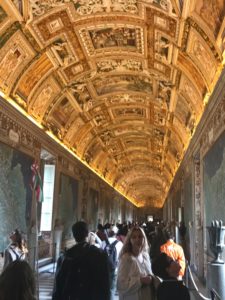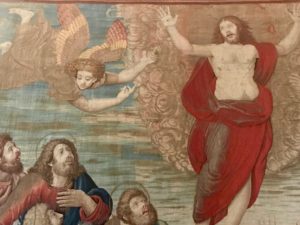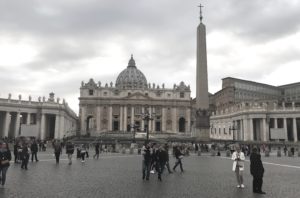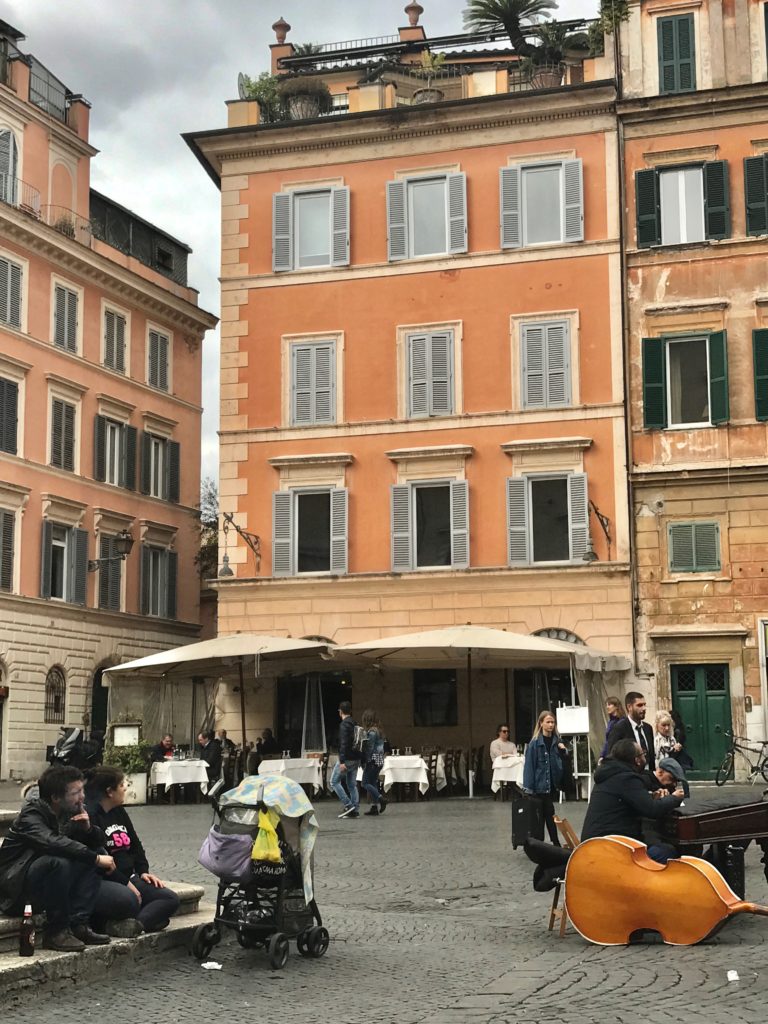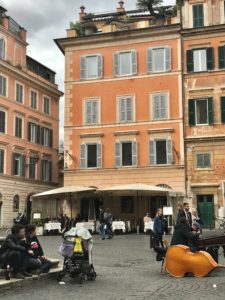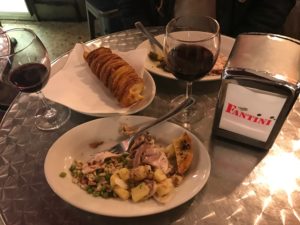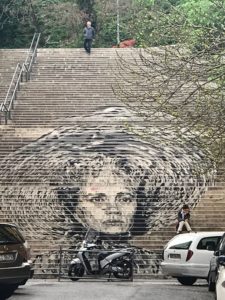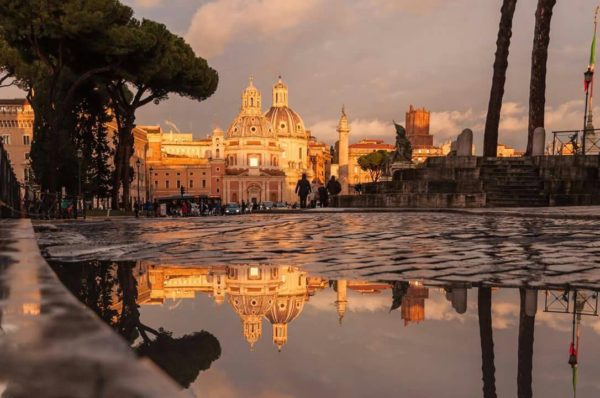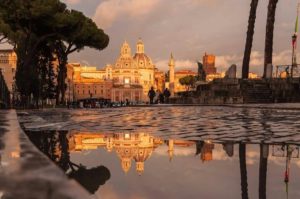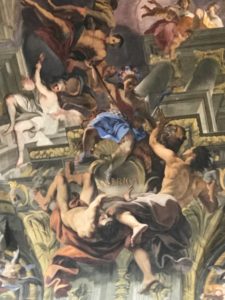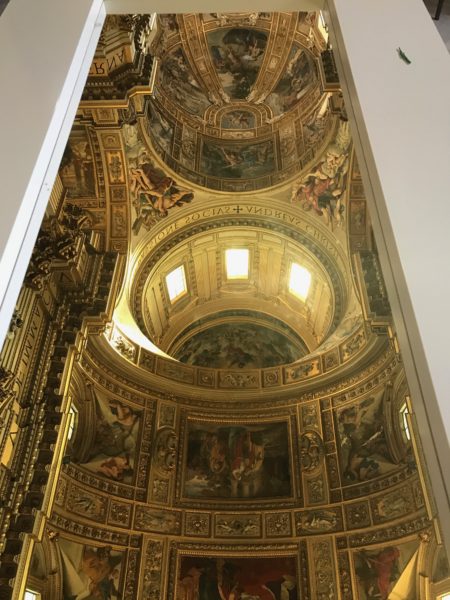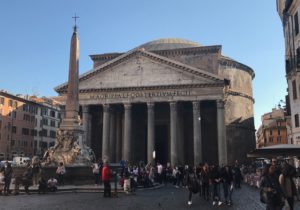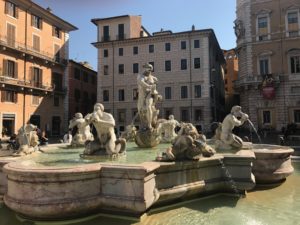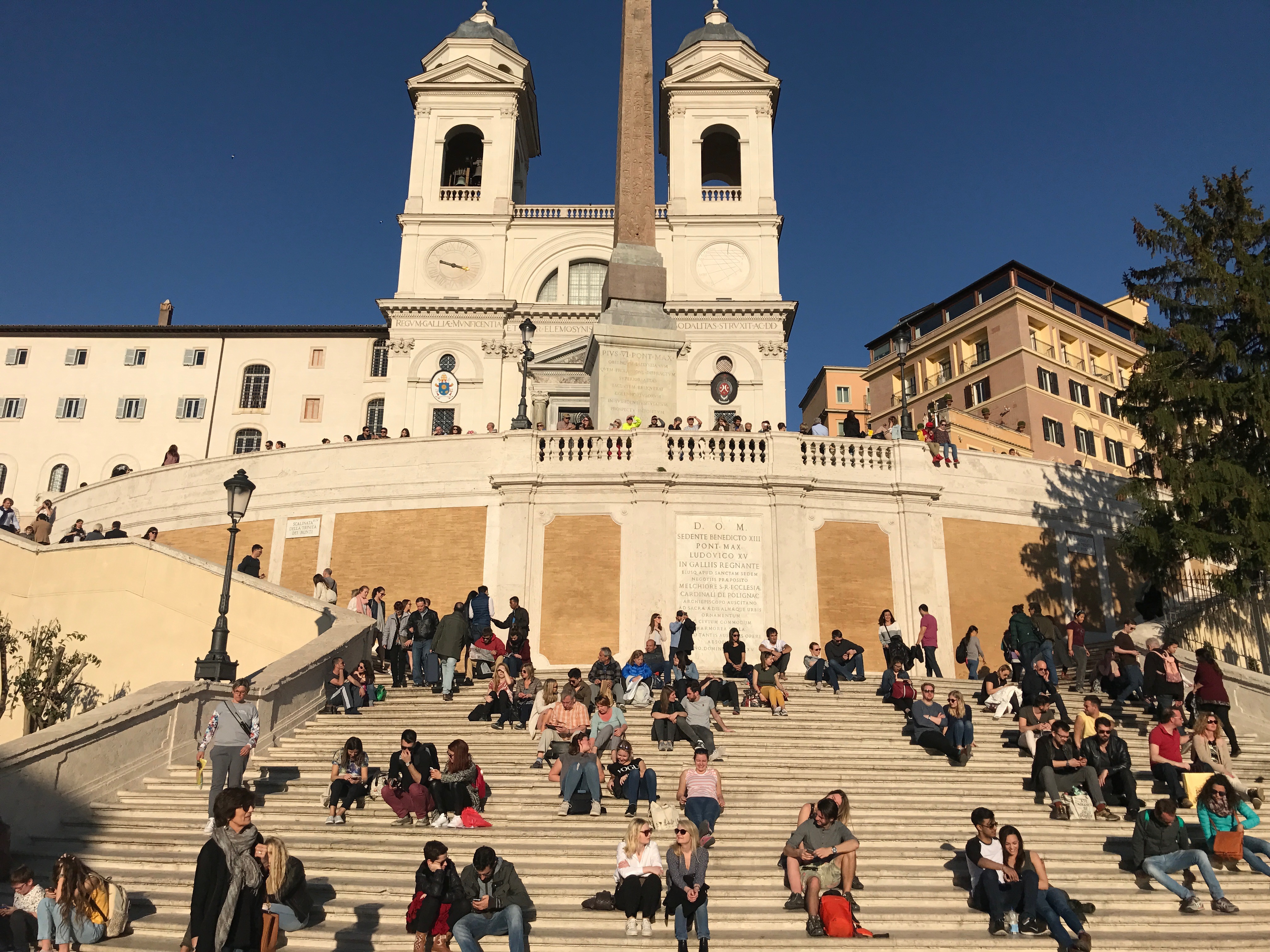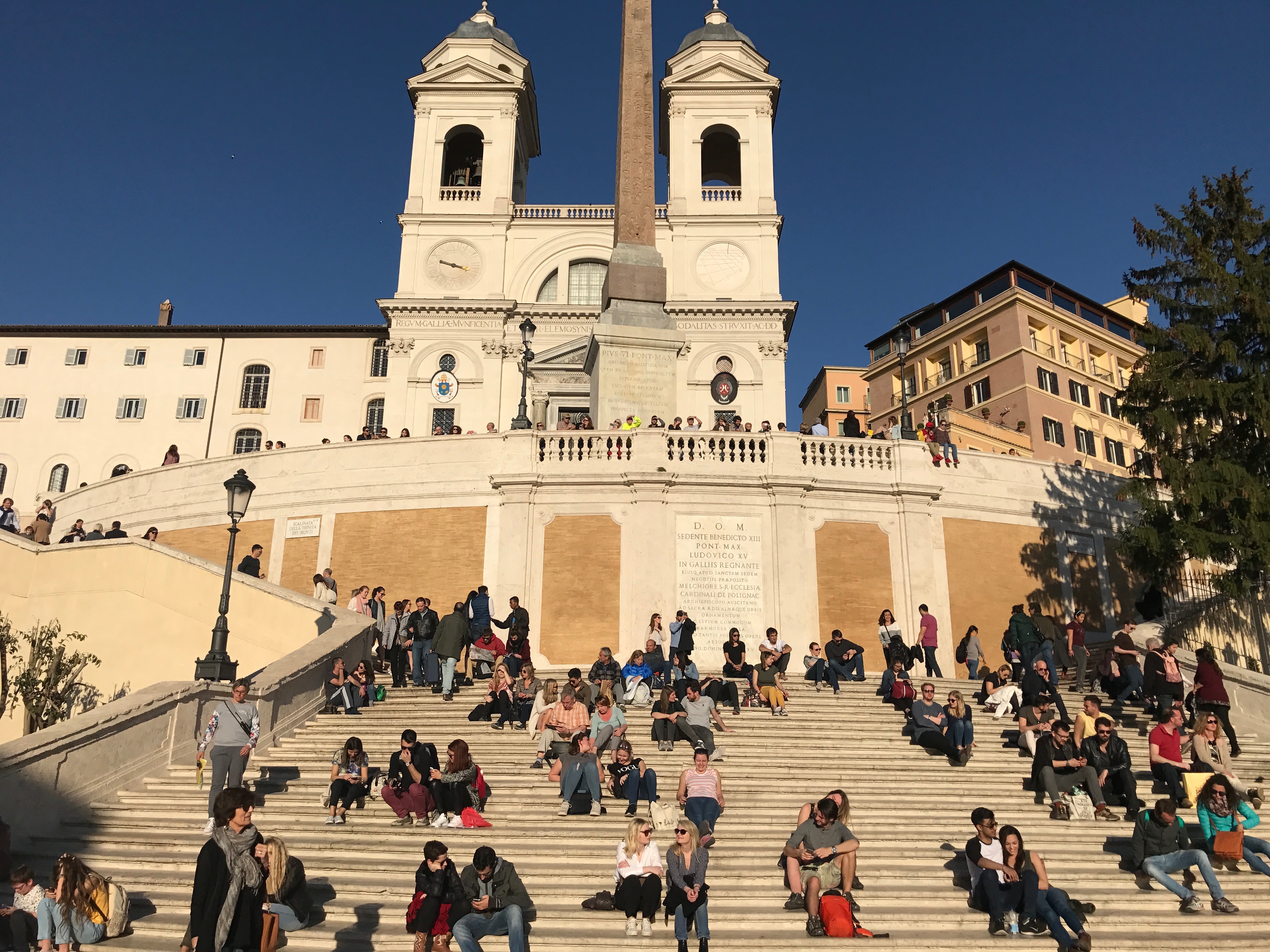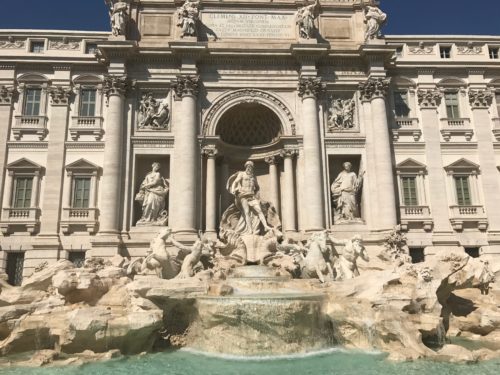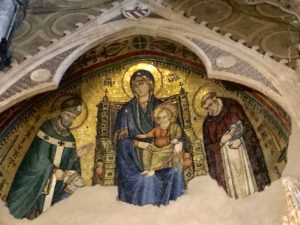Not a fan of “fine dining” restaurants, I have prided myself on being a “non-foodie,” annoyed by dishes described as if abstract art, the snotty attitudes of wait staff and the absurdly inflated prices for petite portions. But all my negativity dissolved recently in twice experiencing dinner at Mercerie “High Street Food,” a new slick, modern, trendy eatery in Rome, Italy that would, on the surface, imply all I distain.
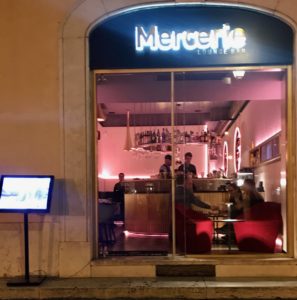 Yes, it exudes hipness – a glass wall fronts the pedestrian street facing the ruins of ancient temples at Largo di Torre Argentina, (also a renowned cat sanctuary; cats considered messengers of the gods). The interior is sleek, with colorful cone-shaped padded stools and barrel chairs at a couple of cocktail tables near the door. A chest-high semi-circular corregated-steel bar, with a vast collection of fluted glasses suspended above, forms the focal point for stylish young black-suited professionals to lean against as the pleasant barman’s perpetual moves elevate drink-making to performance art.
Yes, it exudes hipness – a glass wall fronts the pedestrian street facing the ruins of ancient temples at Largo di Torre Argentina, (also a renowned cat sanctuary; cats considered messengers of the gods). The interior is sleek, with colorful cone-shaped padded stools and barrel chairs at a couple of cocktail tables near the door. A chest-high semi-circular corregated-steel bar, with a vast collection of fluted glasses suspended above, forms the focal point for stylish young black-suited professionals to lean against as the pleasant barman’s perpetual moves elevate drink-making to performance art.
Flat screens cycle artistic photos of signature “tapa-like” dishes served on elongated tryptic plates in white porcelain, intended as finger food, ergo the “street food” reference; definitely “high street.” Subtle lighting and perfectly modulated classic jazz and folk music by original artists round out the ambiance, which extends into the “intimate” dining room, where more substantiial menu items are served with with stainless and gold-tipped flatware. Even the kitchen’s frosted glass motion-sensor sliding door exemplifies attention to every cohesive modern detail.
It’s a perfect construct for inflated prices and foo-foo food. But here’s the difference: The food combinations and presentations really are imaginative and delicious, prices are reasonable, the ambiance is relaxing, and the wait staff is friendly, unpretentious, enthusiastic, knowledgeable and multi-lingual.

This combination of ostensibly hip and genuinely welcoming and worthwhile is due to the vision, expertise and personality behind Mercerie, chef Igles Corelli. Although I’d been told on my first visit that the chef was “Michelin-starred,” that meant nothing to me until my second visit when a smiling, bespectacled man gracious opened the front door. “Benvenuto! Welcome!” Signore Corelli himself.
To watch this man move about his latest creation, shaking hands with guests and speaking encouragingly to his staff between moments of relaxation over a drink with a friend, is to witness a relaxed, confident and good manager; a businessman and culinary artist enjoying the fruits of his labor.
Corelli lives up to his reputation not only as a top Italian chef, whose other restaurants have garnered awards and high praise, but as a dedicated teacher. Through professional associations and tutelage at his restaurants, his lifetime in the world of Italian cuisine – his parents owned a trattoria where he started working at age 9 – has influenced the success of a generation of chefs and pioneered nouvelle Italian cuisine.
While the little plates of innovative concoctions (starting at 7€) delight the senses, the generous salads of mixed greens with nuts, seeds, and thin slices of fruit and veggies with a subtly tangy house dressing (10€) are the best I’ve found in Rome.

As I began eating my salad, Corelli came to the table and handed me a gold-plated salad pincher, explaining it is a prototype he plans to add to the unique offerings at Mercerie. Imprinted in the round tip is the Buddhist Soka Gakkai chant, “Nam-myoho-renge-kyo.” “It’s for happiness and peace!” effused Corelli’s charming partner, Helga Buscaroli. Apparently, Corelli had a dream about them.
Richard H. Seager, my Buddhist scholar companion who’d written a definitive book on the sect, “Encountering the Dharma: Daisaku Ikeda, Soka Gakkai, and the Globalization of Buddhist Humanism,” would have been happy to explain more about the chant, which means something akin to “Hail to the glorious Dharma.” But either their English was too limited or the simple idea of happiness and peace was sufficient knowledge. 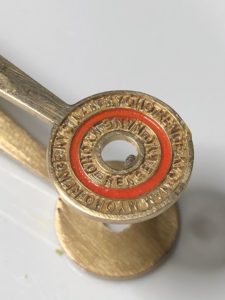
In any case, Corelli is obviously innovating continuously and with the intention of delighting diners with both sensational food and ambiance.
Rome seems the perfect place for conversions, and Mercerie convinced me that “fine dining” may actually be an experience worth pursuing. My foodie friends will be happy to hear I’ve seen the light.
Mercerie High Street Food is located at Via San Nicola De’ Cesarini 4/5, 00186 Roma, Italia. Reservations recommended by phoning +39 340 997 2996, at their Facebook page or @Merceriehighstreetfood. You can read more about Chef Corelli here.
